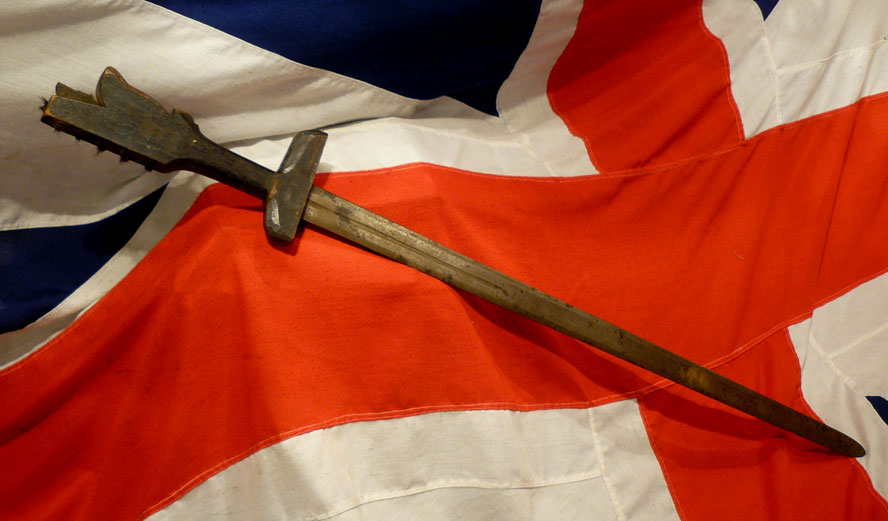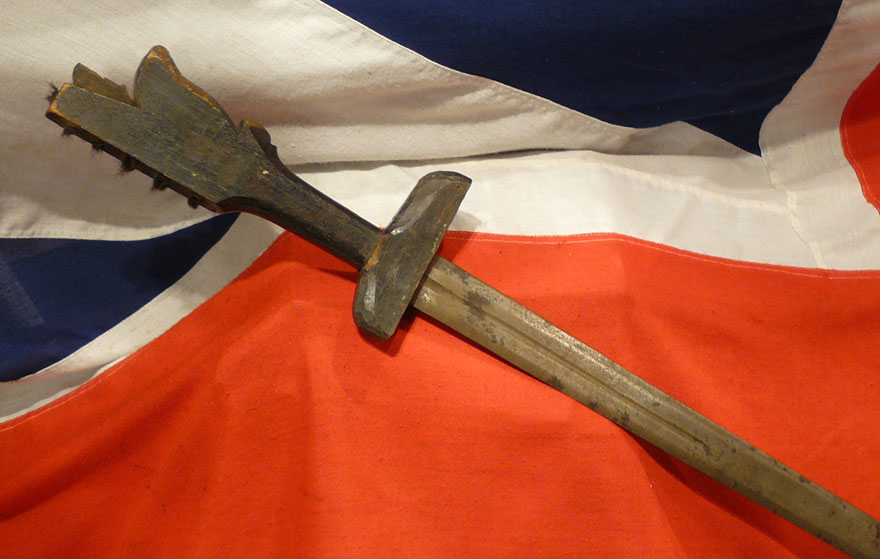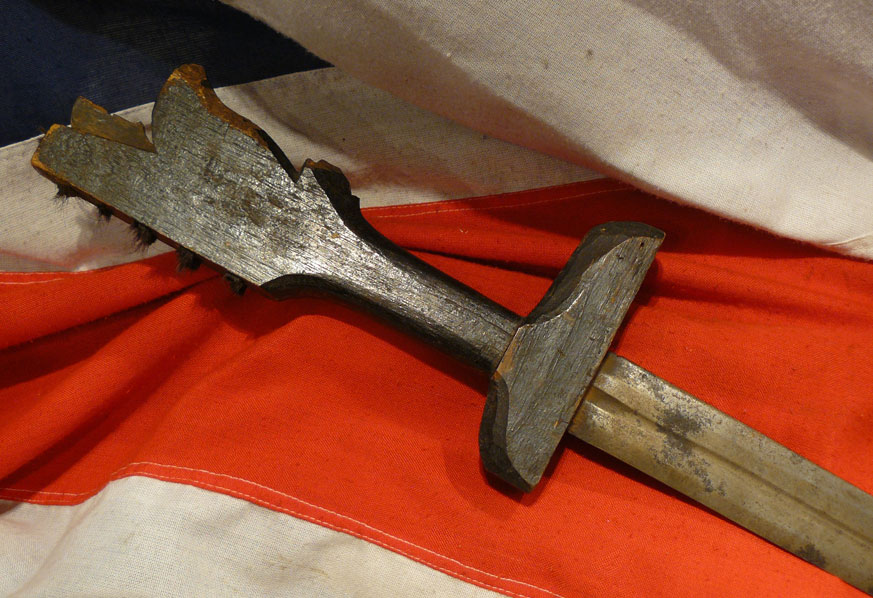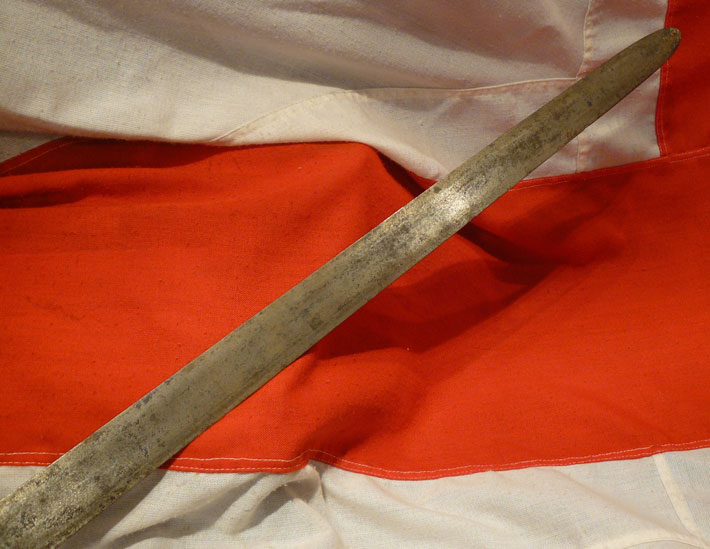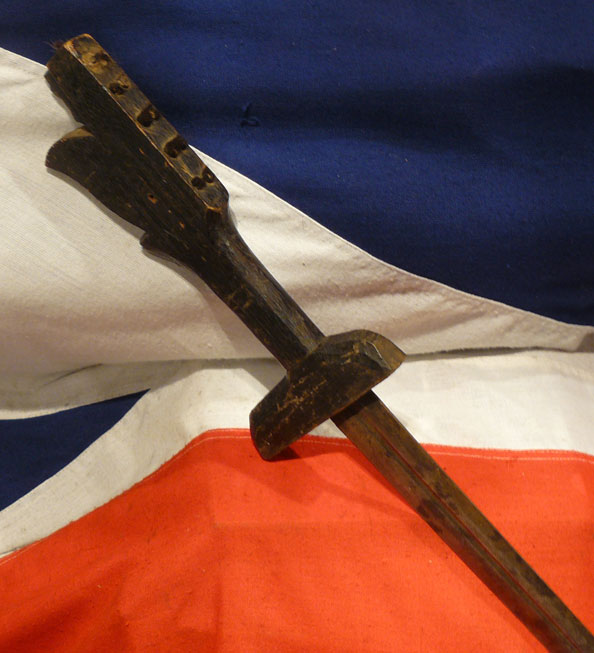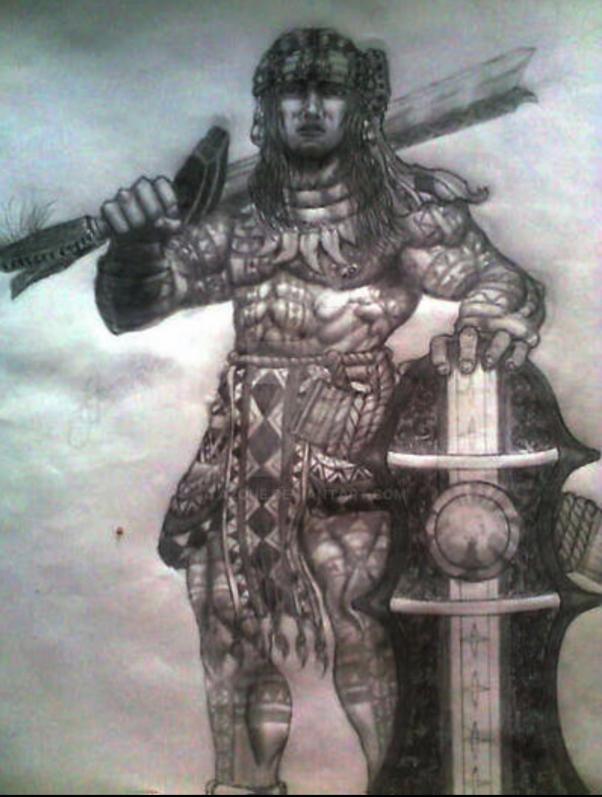A Good & Rare Antique, Malaysian, Kampilan Long Sword. A Sword Very Rarely Seen in Europe. The Kapampangan Name of the Kampilan was "Talibong" and The Hilt on the Talibong Represented the Dragon Naga,
Just returned from excellent hand cleaning polishing and conservation in the workshop
A rare antique tribal sword, with a somewhat crude carved hilt, but superbly effective in the terrain and jungles of the Philippines. It is a most rare example as most were fitted with a domestic made twin pointed blade, wheras this sword has a very special, imported broadsword blade, designed for serious combat situations.
The standard kampilan is a type of single-edged long sword, used in the Philippine islands of Mindanao, Visayas, and Luzon. This unusual variant has a long 33.5 inch double edged blade more reminiscent of a European broadsword, more similar to the sword of Datu Lapu-Lapu, legendary warrior Philippine king of the Mactan. Very likely a good early German trade blade.
The kampilan has a distinct profile, with the tapered blade being much broader and thinner at the point than at its base, sometimes with a protruding spikelet along the flat side of the tip and a bifurcated hilt which is believed to represent a mythical creature's open mouth.
The Maguindanao and the Maranao of mainland Mindanao preferred this weapon as opposed to the Tausug of Sulu who favoured the barung. The Kapampangan name of the Kampilan was "Talibong" and the hilt on the Talibong represented the dragon Naga, however the creature represented varies between different ethnic groups. Its use by the Illocanos have also been seen in various ancient records.
A notable wielder of the kampilan was Datu Lapu-Lapu (the king of Mactan) and his warriors, who defeated the Spaniards and killed Portuguese explorer Ferdinand Magellan at the Battle of Mactan on April 27, 1521.
The mention of the kampilan in ancient Filipino epics originating from other non-Muslim areas such as the Hiligaynon Hinilawod and the Ilocano Biag ni Lam-Ang is possible evidence for the sword's widespread usage throughout the archipelago during the ancient times. Today, the kampilan is portrayed in Filipino art and ancient tradition. The hilt is quite long in order to counterbalance the weight and length of the blade and is made of hardwood. As with the blade, the design of the hilt's profile is relatively consistent from blade to blade, combining to make the kampilan an effective combat weapon.
The complete tang of the kampilan disappears into a crossguard, which is often decoratively carved in an okir (geometric or flowing) pattern.The guard prevents the enemy's weapon from sliding all the way down the blade onto bearer's hand and also prevents the bearer's hand from sliding onto the blade while thrusting.
The most distinctive design element of the hilt is the Pommel, which is shaped to represent a creature's wide open mouth. The represented creature varies from sword to sword depending on the culture. Sometimes it is a real animal such as a monitor lizard or a crocodile, but more often the animal depicted is mythical, with the naga and the bakonawa being popular designs. Some kampilan also have animal or human hair tassels attached to the hilt as a form of decoration.
No scabbard
Code: 16828
465.00 GBP

